MLB draft competitive balance picks have a mixed history
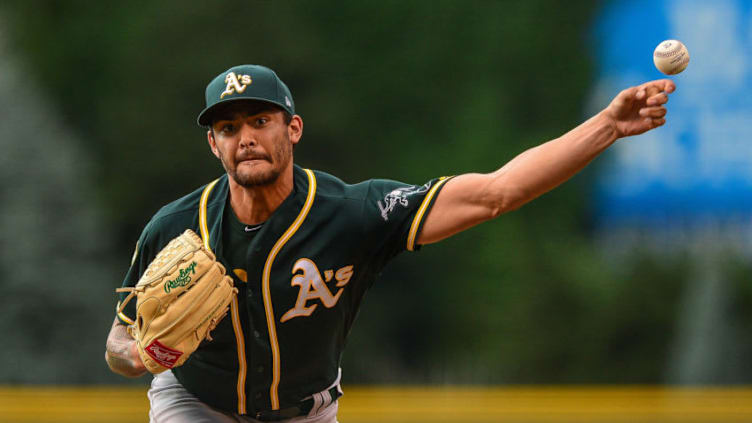
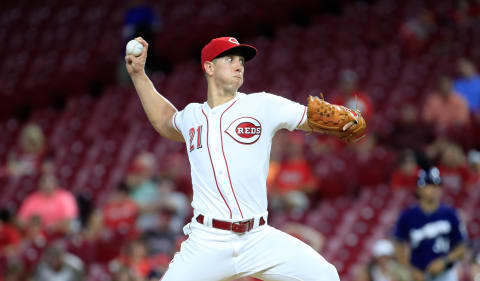
With competitive balance selections in the 2019 MLB draft becoming an important negotiating piece in the 2018/2019 offseason, it’s fitting to look at how those picks have been used since they came into fruition.
Recent changes to Major League Baseball’s Collective Bargaining Agreement has changed the MLB draft. One of the most notable changes was the addition of competitive balance selections that began in 2013 after the signing of the 2012 CBA. This offseason, those picks have been mentioned often, so let’s take a look at what they are, and how they’ve been used in the past few years of the MLB draft.
What are competitive balance picks?
The MLB CBA signed in 2012 initiated competitive balance picks, but they’ve evolved a lot since!
The initial intention of the competitive balance picks was to allow the teams in small markets or low revenue streams to get an extra bonus to hopefully help to balance things out better across the league. The selections come during the annual June MLB draft, also known as the Rule 4 draft.
The 10 lowest-revenue clubs, as well as the teams from the 10 smallest markets, are eligible to receive selections. Typically, that means that less than 20 teams end up eligible as teams will overlap into both groups. In the initial iteration of the picks, those teams were entered into a lottery to receive picks. Rather than a lottery, teams now rotate their selections between rounds.
The selections awarded are deemed either round A or round B. Round A occurs after the first round and compensatory picks that follow the first round, but before the second round. Round B occurs between the second round and second round compensatory picks.
One big part of the selections that make them different when compared to any other MLB draft selection is that these picks can be traded (just once, but they can be moved). This offseason has seen three competitive balance selections traded already – the Texas Rangers have acquired the #39 pick in round A from the Brewers, the Seattle Mariners have acquired the #77 pick in round B from the Indians, and the Arizona Diamondbacks have received the #78 pick in round B from the Cardinals.
Overall, the 2019 competitive balance rounds are as follows:
- Round A
- 34. Miami Marlins
- 35. Tampa Bay Rays
- 36. Cincinnati Reds
- 37. Pittsburgh Pirates (compensation for not signing #36 pick in 2018)
- 38. Oakland Athletics
- 39. Texas Rangers (from Brewers in trade)
- 40. Minnesota Twins
- Round B
- 71. Kansas City Royals
- 72. Baltimore Orioles
- 73. Pittsburgh Pirates
- 74. San Diego Padres
- 75. Arizona Diamondbacks
- 76. Colorado Rockies
- 77. Seattle Mariners (from Indians in trade)
- 78. Arizona Diamondbacks (from Cardinals in trade)
Let’s take a look at each year’s selections, starting with the first year:
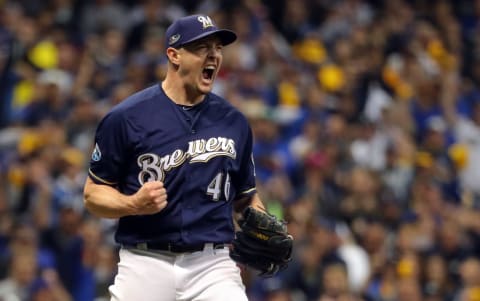
2013
A
34. Royals – Sean Manaea
35. Marlins – Matt Krook (originally Pittsburgh’s pick)
36. Diamondbacks – Aaron Blair
37. Orioles – Josh Hart
38. Reds – Michael Lorenzen
39. Tigers – Corey Knebel (originally Miami)
B
69. Padres – Jordan Paroubeck
70. Rockies – Alex Balog
71. A’s – Chad Pinder
72. Brewers – Tucker Neuhaus
73. Marlins – Colby Suggs (originally Detroit)
Every season has included at least one trade of a selection, but this was a big kick-off to the new system, as three selections were traded. The Marlins received Pittsburgh’s pick in a trade for Gaby Sanchez in July of 2012. The Tigers and Marlins swapped their selections as part of the Anibal Sanchez trade in July of 2012.
The Royals took advantage of the very first competitive balance pick in the MLB draft to select a player who had top-10 talent but saw an injury cause his stock to fall. Manaea has produced the most bWAR of any player from this group, with a 3.94 ERA and 1.22 WHIP at the major league level to this point.
Corey Knebel has established himself as an excellent reliever, saving 57 games thus far. Michael Lorenzen has been excellent as a reliever and pinch hitter both for the Reds. Pinder established himself as a utility man with the A’s over the last two years, and he could step into a starting role in 2019 with Jed Lowrie moving on in free agency. He is the only of the round B players to make the majors thus far.
Matt Krook became the first of what would become a line of players to not sign with their drafting team in the competitive balance round. He chose instead to head to college.
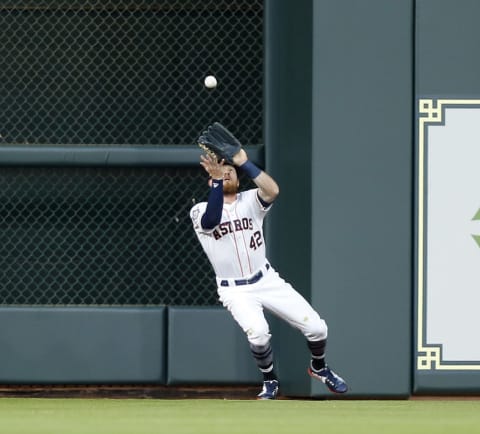
2014
A
35. Rockies – Forrest Wall
36*. Marlins – Blake Anderson
37. Astros – Derek Fisher
38. Indians – Mike Papi
39. Pirates – Connor Joe
40. Royals – Chase Vallot
41. Brewers – Jake Gatewood
B
69. Diamondbacks – Marcus Wilson (originally Padres)
70. Diamondbacks – Isan Diaz
71. Cardinals – Andrew Morales
72. Rays – Brent Honeywell
73. Pirates – Trey Supak
74. Mariners – Gareth Morgan
Just one player of this list has made the major leagues, and that’s Derek Fisher in a backup role. However, Brent Honeywell was one of the top 25 prospects in all of baseball before his Tommy John surgery last spring.
None of the players chose not to sign, which is the only year that all competitive balance selections signed with their drafting teams. Multiple players have also become top-30 prospects within their team and one other (Isan Diaz) has ranked as a top-100 prospect.
The path has not been smooth for many of these selections, as Gareth Morgan has yet to break out of A-ball and Blake Anderson (the Marlins compensation for not signing Krook the previous season) ended up switching from catching to the mound in 2017.
Of all the years of competitive balance selections, this one has shown to be the roughest season of picks as far as producing top players, tough Honeywell could end up changing a lot of that all on his own if he comes back well from TJS.
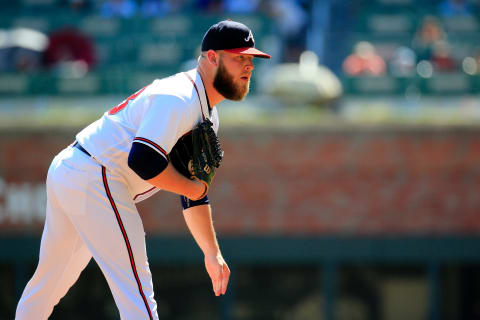
2015
A
37. Astros – Daz Cameron (originally Marlins)
38. Rockies – Tyler Nevin
39. Cardinals – Jake Woodford
40. Brewers – Nathan Kirby
41. Braves – Austin Riley (originally Padres)
42. Indians – Triston McKenzie
B
71. Reds – Tanner Rainey
72. Mariners – Andrew Moore
73. Twins – Kyle Cody
74. Dodgers – Josh Sborz (originally Orioles)
75. Braves – A.J. Minter (originally Diamondbacks)
After one of the weakest groups of picks, the 2015 class was smaller due to a number of selections being given up by teams signing players and losing their pick, but the smaller group has produced very high-end talent.
Kyle Cody chose not to sign with the Twins, and his gamble didn’t pay off as he fell to the 6th round in the 2016 draft.
All of the major leaguers from this group have come from round B thus far. A.J. Minter has posted the best bWAR in his short time in the big leagues.
There are impressive prospects here, though, and they should be getting to the major leagues soon. Daz Cameron has ranked as high as #74 in top 100 lists, Austin Riley has ranked as high as #54 on top 100 lists (and should rank even higher this offseason), and Triston McKenzie has topped out at #24.
Kirby is one to follow this year as he finally got back on the mound in 2018 after missing all of 2016 and 2017 after surgery. Tyler Nevin is also one to track after hitting an impressive .426/.535/.593 in the Arizona Fall League with a 15/5 BB/K ratio.
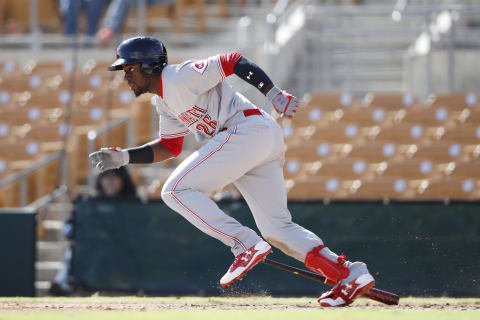
2016
A
35. Reds – Taylor Trammell
36. Dodgers – Jordan Sheffield
37. A’s – Daulton Jefferies
38. Rockies – Robert Tyler
39. Diamondbacks – Anfernee Grier
40. Braves – Joey Wentz (originally Marlins)
41. Pirates – Nick Lodolo
B
71. Padres – Reggie Lawson
72. Indians – Logan Ice
73. Twins – Jose Miranda
74*. Twins – Akil Baddoo
75. Brewers – Mario Feliciano
76. Braves – Brett Cumberland (originally Orioles)
77. Rays – Jake Fraley
There was one to not sign in this group, lefty pitcher Nick Lodolo. He’s gone 12-5 over 33 appearances, 30 starts, tossing 155 2/3 innings, with a 4.34 ERA and a 56/165 BB/K ratio for Texas Christian, positioning himself well in 2019 for the draft.
Trammell has been the best prospect of the group, winning the MVP of the Futures Game during All-Star week this season. In general, each of these players has turned into one of his team’s best prospects. Only Grier and Ice are not on his respective team’s top-30 prospect list through MLB Pipeline.
Most likely you’ll end up seeing Baddoo, Wentz, Jefferies, and possibly even Lawson and Miranda working into top 100 lists over the next year or more. While not the star power of the 2015 class, this group has a host of potential major leaguers.
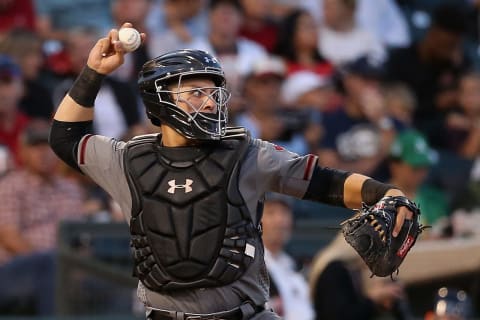
2017
A
31. Rays – Drew Rasmussen
32. Reds – Jeter Downs
33. A’s – Kevin Merrell
34. Brewers – Tristen Lutz
35. Twins – Brent Rooker
36. Marlins – Brian Miller
B
68. Diamondbacks – Daulton Varsho
69. Padres – Blake Hunt
70. Rockies – Tommy Doyle
71. Indians – Tyler Freeman
72. Pirates – Conner Uselton
73. Royals – Evan Steele
74. Orioles – Zac Lowther
75. Astros – J.J. Matijevic (originally Cardinals)
While this is the one season where a selection wasn’t traded, there was one pick moved from its original team as the Cardinals were forced to give their pick to the Astros as part of their punishment for the hacking done on the Astros computer systems.
This group of players is an intriguing mix of high-upside, low-floor players from the high school ranks and quick-moving players from the college ranks and plenty in between. After playing plenty at the AA level in 2018, Rooker and Miller could be up to the major leagues for at least a September call-up in 2019. The way Varsho, Doyle, Lowther, and Matijevic showed in 2018, there could be more than just those two seeing the major leagues in 2019.
Rasmussen joined the “trend” of competitive balance selections not signing when he chose to return to Oregon State after the Rays found he needed to have Tommy John surgery. He spent 2018 recovering and will be on the mound for the Brewers, who picked him in the 6th round, in 2019.

2018
A
36. Pirates – Gunnar Hoglund
37. Orioles – Cadyn Grenier
38. Padres – Xavier Edwards
39. Diamondbacks – Jake McCarthy
40. Royals – Kris Bubic
41. Indians – Lenny Torres
42. Rockies – Grant Lavigne
43. Cardinals – Griffin Roberts
B
69. Marlins – Will Banfield
70. A’s – Jeremy Eierman
71. Rays – Tanner Dodson
72. Reds – Josiah Gray
73. Brewers – Micah Bello
74. Padres – Grant Little (originally Twins)
More from Call to the Pen
- Philadelphia Phillies, ready for a stretch run, bomb St. Louis Cardinals
- Philadelphia Phillies: The 4 players on the franchise’s Mount Rushmore
- Boston Red Sox fans should be upset over Mookie Betts’ comment
- Analyzing the Boston Red Sox trade for Dave Henderson and Spike Owen
- 2023 MLB postseason likely to have a strange look without Yankees, Red Sox, Cardinals
For the second straight season the top pick in the competitive balance round A ended up not signing with his drafting team. Hoglund chose to attend the University of Mississippi instead, where he’ll be a freshman this year.
One of the most impressive seasons from this group was from Rockies selection Grant Lavigne, a first baseman from New Hampshire who has the size to be an impact hitter down the line, but high school first basemen are not typically a highly-desired draft group. Lavigne ended up hitting .350/.477/.519 with advanced rookie Grand Junction, pounding out 13 doubles, 2 triples, and 6 home runs. He even stole 12 bases with a 45/40 BB/K ratio.
On the mound, Reds selection Josiah Gray came from an NAIA level school and had a very good pro debut. Pitching for Greeneville in the Appalachian League, Gray threw 52 1/3 innings with a 2.58 ERA, 0.88 WHIP, and a 17/59 BB/K ratio.
dark. Next. 5 Non-Machado IF options
As you can see, the picks have been a bit of a crap shoot, but all picks in the MLB draft to some degree truly are. They do have certain trade value, and it will be interesting to see if any more move this offseason as the most that have been traded are 4, and already 3 have been traded in the 2019 draft.